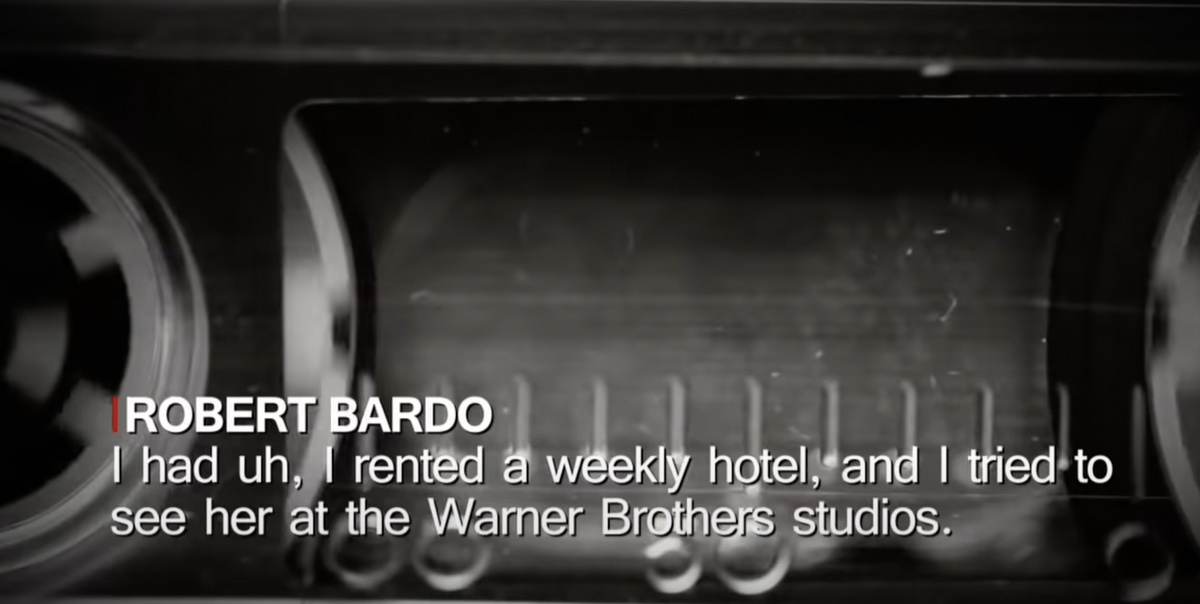How the Murder of an '80s Sitcom Star Led to Groundbreaking New Laws
Rebecca Schaeffer was killed by an obsessed fan who'd be stalking her for years.

The 1989 murder of Rebecca Schaeffer shook Hollywood and the nation. A rising star, the 21-year-old had become known for her breakout role opposite Pam Dawber (Mork & Mindy) in the sitcom My Sister Sam, which aired from 1986 to 1988. Following the sitcom's end, Schaeffer had moved on to a burgeoning film career and was reportedly in the running for the lead in Pretty Woman and had a meeting with director Francis Ford Coppola scheduled when she lost her life in a senseless act of violence. In addition to drawing new attention to the threats faced by the famous, her death also led to groundbreaking new legislation that would protect both celebrities and ordinary people from the dangerously obsessed. Read on to learn more.
READ THIS NEXT: The Disappearance of This Rising Hollywood Star Is Still Unsolved 73 Years Later.
A fan stalked her for more than two years.

In 1986, Robert John Bardo, then an Arizona high schooler, became obsessed with Schaeffer after seeing her in a television promo for My Sister Sam, according to ABC News. The teenager tried to make contact with the actor for more than two years, sending her long fan letters, many of which were intercepted by the young actor's handlers so that she would not feel scared. In June 1987, he appeared at the Warner Bros. studio where My Sister Sam filmed, insistent on meeting the actor and presenting her with a stuffed teddy bear he had brought. As reported by the Los Angeles Times, after being turned away once, he returned—this time with a knife. A security officer took him back to his office, told him a meeting would not be happening, and drove him back to his motel, telling him it was time to return to Arizona.
He was able to find out where she lived.

That wouldn't be the end of the obsession, however. In psychiatric interviews following his arrest (via UPI), Bardo described walking the streets of Hollywood Hills in search of residences that matched the description Schaeffer had given in a Seventeen interview. Unsuccessful, he ultimately hired a private investigator who was able to find Schaeffer's address by paying four dollars to look it up at the Department of Motor Vehicles. Bardo later said he was inspired by reading how another obsessed fan, the man convicted of the near-fatal stabbing of Raging Bull actor Theresa Saldana in 1982, had obtained his victim's address with the help of a private investigator.
Schaeffer was killed on her doorstep in 1989.

In June of 1989, Bardo reportedly became enraged after seeing Schaeffer lying in bed with a man in a brief scene in the film Scenes from the Class Struggle in Beverly Hills. According to the John Douglas book Obsession, he then pursued his sick retribution with focus. "In Arizona, you had to be twenty-one to purchase a firearm, so Bardo got an older brother to buy one for him," Douglas wrote. "He wanted to make sure his attempt wasn't a failure, so he got hollow-point cartridges, designed to expand as they penetrate."
On the morning of July 18, 1989, after traveling almost 500 miles, he arrived at the doorstep of her Hollywood home thanks to the address he had obtained from the investigator. Schaeffer, who had been awaiting courier delivery of The Godfather Part III script for an audition, answered the door. The killer told her he was her biggest fan and left after she excused herself. However, after eating breakfast at a nearby diner, he soon returned. When she opened the door this time, Bardo pulled out his gun and shot her in the chest. Although Schaeffer was rushed to Cedars-Sinai Medical Center, she was sadly pronounced dead soon after her arrival. She was 21 years old.
Bardo was convicted of murder in 1991 and sentenced to life in prison. Now 52, he's serving out his sentence in California.
Schaeffer's death sparked a string of anti-stalking laws and privacy legislation.
Prior to Schaeffer's death, there were no anti-stalking laws in the United States. Her murder sent shockwaves through Hollywood, raised nationwide awareness of stalking and the extremes it could go to, and helped galvanize a movement to protect both famous and regular people from stalkers. The Los Angeles Police Department soon went on to create a unit devoted to stalking cases. Inspired by Schaeffer's death as well as those of four other young women who had been killed despite having restraining orders, California passed its first anti-stalking law in 1990, giving police greater freedom to intervene in stalking cases. The law was revised in 1994 as California Penal Code 646.9, which makes it illegal to follow, harass, or threaten someone with the intent of causing them emotional distress. In the next three years, 30 more states would follow suit, and today there are anti-stalking laws in every state. In 1994, the Driver's Privacy Protection Act, which prevents the DMV from releasing private addresses, was enacted and Congress enacted the first federal stalking law in 1996.





















